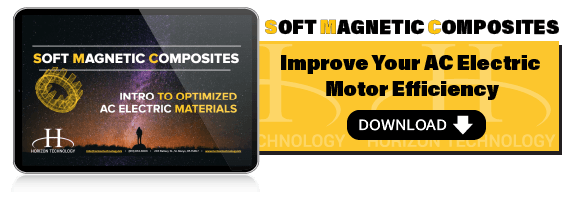Electric motor design for personal transport -- including e-bikes, e-scooters and e-motorcycles – has come into its own in the past decade. These “alternative” motors are used across an increasingly robust market that’s ever more prevalent in day-to-day life. It’s reasonable to assume that electric motors will eventually become the norm in small, personal vehicles.
However, there are some design challenges manufacturers and their suppliers are still trying to overcome. This is particularly for vehicles that need more power, like with e-bike motor design.
e-Bikes, e-Scooters, e-Motorcycles – Design Considerations and Challenges
For the purpose of this article, let's look at three main ways to get around:
- e-bikes
- e-scooters
- e-motorcycles
These alternative methods of transportation are exploding in popularity, especially in urban areas. We’ve also seen many used in our rural Pennsylvania backyard.
While these three vehicles are similar, each has nuances you should account for when drawing up a design.
What Types of Motors Go Into These Designs?
The star of every e-mobility product is the motor, so let’s focus on that.
A lot of money and research has gone into designing better electric vehicles, particularly in traditional automobiles. However, much of that effort focus on increasing battery performance. The basic designs of the actual motor have not changed nearly as drastically as the battery designs.
Electric motors still have some of the same inherent weaknesses they’ve always had – excessive heat generation being one of those. If the engine gets too hot, it stops working, and that’s a problem for someone renting an e-scooter to travel across half of downtown Pittsburgh.
Not every smaller electric vehicle requires a big motor generating huge amounts of heat. Electric bikes are one exception to the rule. But with e-motorcycles and some other vehicles, heat management becomes more difficult.
Let’s look at how all these design considerations come into play by vehicle type:
e-Bikes
There are two types of electric motors common in electric bike motor design:
Crank Drive Motors
These were the first advanced electric motor to see frequent use in bicycles.
The great thing about crank drive motors is they can easily integrate with common gear systems. This allows the user to power the bike by pedaling while getting an assist from the motor along the way. This makes them useful for climbing hills, something that smaller hub drive motors are not ideal for.
You can use a derailleur system with crank drive motor to actually multiply the torque for expanded hill-climbing prowess.
Hub Drive Motors
These were introduced in part because early crank drives were costly. Hub drive motors sit -- you guessed it -- in the hub of the wheel and are typically light and small.
Small hub drive motors are only good for flat surfaces. However, today there are larger hub drive motors that can power the vehicle up hills.
The derailleur system won’t offer the same torque multiplication with hub drive motors because it’s already sitting in the hub at the final drive axle.
Brushed DC Motors
This type opens the door for conventional powder metal parts in the motor frame, which could provide design advantages. For example, just like with some cordless drills that use a powder metal stator, you can use its unique shape-making ability to incorporate features such as pockets for permanent magnets or stator pulls that are easily wrapped.
The problem with these motors is the brushes wear out and need replacement. Offsetting this drawback is the fact that DC brushed motors have a relatively low initial cost -- just expect a performance tradeoff.
Brushless DC Motors
Brushless DC motors are also called BLDC motors. These are the e-bike industry default at this point because they tend to be smaller and lighter. A BLDC eliminates the brushes, which improves the long-term durability of the motor.
The catch is that If a brushed motor is $80 or so, a brushless one costs about $200. BLDC motors are more costly because they often use expensive permanent magnets with electronics to sense the position of the rotor. (This is how the individual coils are magnetized.)
Some higher-end bikes are sold for $3,000-$4,000. So a lot depends on how much the designer wants to spend and its target market.
e-Scooters
Unlike Fred’s car in “The Flintstones,” the rider does not put much effort into the use of a scooter. E-scooters need to be able to propel users along without much assistance. That means crank drive motors are not an option.
Some of the considerations that go into electric scooter motor design include:
- Number of motors. To get better performance, many high-end scooters will include two motors.
- Motor wattage. A motor with a 250W rating will consume 250W of power, which translates into enough power to push a mobility scooter. You need more wattage for a faster scooter.
- Drive system. Chain drive scooter motors are more dependable, but louder. Belt drive scooter motors break more often but are quieter.
e-Motorcycles
It’s in the design of electric motorcycle components where you really see the current limitations of electric motor technology.
These vehicles tend to use hub motors -- brushless, to be specific. But they’re so powerful that keeping them -- and the rider -- from overheating can be difficult.
However, the Harley Revelation is very similar to a mid-line-style crank motor, mounted in the middle of the chassis for center-of-gravity considerations. So it’s not necessarily a hub motor.
Key considerations of electric motorcycle design include:
- Power. To get a fast e-motorcycle, you need to have a bigger e-motor. That means you have to create enough room to fit it on the bike along with all the other required components, like the cooling system.
- Heat generation. A bigger motor is going to produce more heat – enough to kill performance without adequate cooling systems.
- Where to put everything? Designing a comfortable, useable bike with a big motor is not easy. You have to marry performance with the very real limitations of space availability.
- Weight balance. As we touched on above, this is especially important with motorcycles vs. cars.
Role of Powder Metallurgy in e-Motor Design
In electric motors, the higher the frequency, the better the performance.
Traditional materials like lamination steel put automatic limits on the shapes you can create when designing motors. Powder metallurgy (PM) provides a solution to this problem because you’re building from scratch.
With powder metal, you can achieve complex shapes, including with soft magnetic composite materials. These advanced solutions allow you to improve frequency and develop unique design opportunities in current and future e-motor designs.
The Future of e-Design
Powder metal is the perfect material for electric motors. Expect to see an increase in the use of powder metal parts as the transportation industry goes increasingly “electric.” it’s how engineers for e-mobility companies will advance their designs.
To learn more about soft magnetic composites and how they increase the efficiency of an electric motor, get the free e-book below:



